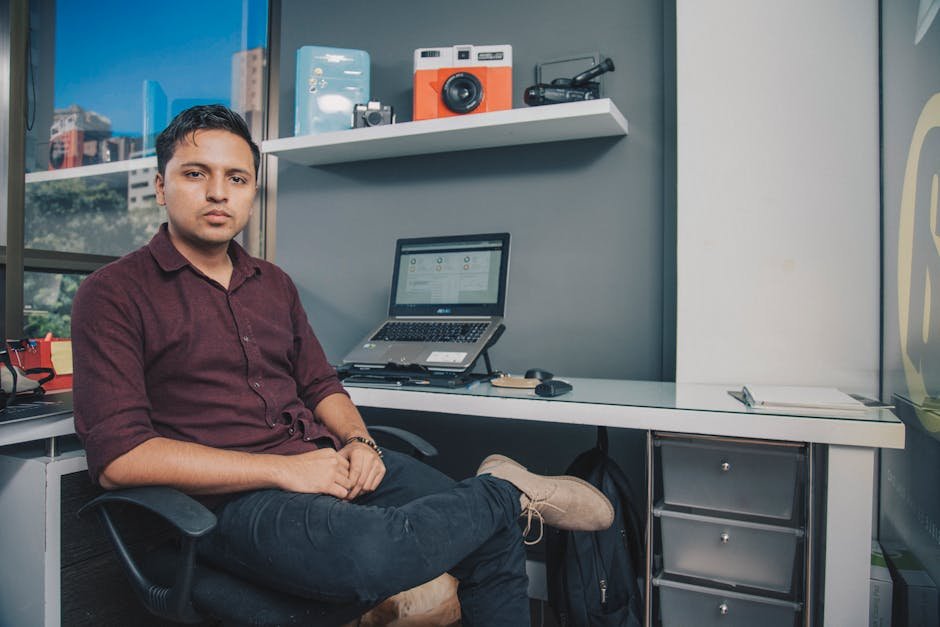The digital nomad dream is often painted as a whirlwind of new places, passport stamps, and a constantly changing backdrop for your laptop. But for many who’ve lived this life for a while, the thrill of rapid movement can quickly morph into exhaustion. This is where the “Art of Slow Travel” comes in. It’s a conscious choice to step off the fast lane, to linger longer, and to truly breathe in a place rather than just pass through it. For digital nomads, slow travel isn’t just a leisure preference; it’s a strategic antidote to burnout, a pathway to deeper cultural immersion, and ultimately, a more sustainable and enriching way to live and work abroad.
1. Fast Travel vs. Slow Travel for Nomads: A Comparison
Understanding the nuances between these two approaches is key to appreciating the benefits of slowing down.
The Downsides of Fast Travel for Nomads
- Constant Logistical Strain: The endless cycle of booking flights, finding new accommodation, packing, unpacking, and orienting yourself in a new city can be mentally and physically draining. Decision fatigue sets in quickly.
- Superficial Experiences: When you’re only in a place for a few days or a week, you often only scratch the surface. You stick to tourist traps, rarely meet locals, and miss out on the true rhythm of a place.
- High Costs: Short-term rentals are almost always more expensive. Frequent flights and trains, along with constant eating out, quickly inflate your budget.
- Quick Burnout: The combination of intense travel, adapting to new environments, and maintaining work can lead to a rapid onset of exhaustion, disillusionment, and a desire to simply “go home.”
- Environmental Impact: More frequent travel naturally leads to a larger carbon footprint.
The Undeniable Advantages of Slow Travel for Nomads
- Deeper Cultural Understanding: You have time to observe, learn, and engage. You find the local haunts, understand nuances of communication, and build genuine connections.
- Reduced Stress & Burnout: The pace is calmer. You settle in, establish routines, and have fewer logistical headaches. This allows for mental and physical recuperation.
- Better Work-Life Balance: With a stable base, it’s easier to create dedicated work zones and truly disconnect during your off-hours. You’re not always rushing to fit in sightseeing.
- Significant Cost Savings: Longer-term accommodation usually comes with substantial discounts. You can cook more, find local grocery stores, and use public transport more efficiently.
- Environmental Benefits: Fewer flights mean a smaller carbon footprint, aligning with a more responsible way to travel.
- Stronger Local Connections: You become a familiar face, build rapport with shopkeepers, and might even make local friends, which enriches your experience immeasurably.
2. The Pillars of Slow Travel
Slow travel isn’t just about spending more time in one place; it’s about a fundamental shift in mindset and approach.
- Time (The Core): This is the most obvious pillar. Instead of days, think weeks or months per location. A minimum of one month is often recommended to truly settle in, find your rhythm, and begin to feel like a temporary local.
- Immersion (The Goal): It’s about more than seeing sights. It’s about engaging with the local culture – trying to learn basic phrases, eating where locals eat, understanding the history, and participating in daily life.
- Mindfulness (The Practice): Being present in the moment, rather than rushing to the next item on a checklist. It’s about savoring a morning coffee, observing street life, and appreciating the small, everyday details.
- Sustainability (The Conscience): Conscious choices about transport, consumption, and supporting local businesses help minimize your negative impact and maximize your positive contribution to the communities you visit.
3. Strategies for Deeper Immersion
Once you commit to a longer stay, how do you move beyond being a perpetual tourist to truly integrate?
- Embrace Local Life and Routines:
- Shop at Local Markets: Bypass the big supermarkets. Explore local markets for fresh produce, engage with vendors, and discover regional specialties.
- Cook at Home: Utilize Airbnb kitchens or apartment rentals. Cooking your own meals is not only cost-effective but also a fantastic way to experiment with local ingredients and feel more “at home.”
- Utilize Public Transport: Learn the local bus, metro, or tram system. It’s often cheaper, more authentic, and helps you understand the city’s layout from a local’s perspective.
- Learn the Language (Even the Basics):
- A few key phrases (hello, please, thank you, how much, where is) can unlock a world of difference. It shows respect and opens doors to genuine interactions.
- Consider a short language course if staying for a month or more. It’s a fantastic way to meet both locals and other expats.
- Connect with Locals Beyond Tourism:
- Join Local Clubs/Classes: Take a cooking class, a dance lesson, or join a local sports club. Shared hobbies are powerful bridges.
- Volunteer: If time permits, offering your skills to a local non-profit or community project is an unparalleled way to give back and meet passionate locals.
- Frequent Local Spots: Become a regular at a specific cafe, restaurant, or park. Familiarity breeds friendly interactions.
- Seek Out Authentic Experiences:
- Attend Community Events: Look for local festivals, street markets, art fairs, or music performances that might not be on the main tourist radar.
- Explore Beyond the City Center: Venture into residential neighborhoods to see how people truly live.
- Ask Locals for Recommendations: Don’t rely solely on online guides. Ask your Airbnb host, a barista, or a friendly shopkeeper for their favorite hidden gems.
4. Combating Nomad Burnout with Slow Travel
The constant pressure to be “on” — working, exploring, adapting — is a significant driver of digital nomad burnout. Slow travel offers inherent mechanisms to mitigate this.
- Establish Sustainable Routines: With a stable base, you can create consistent work hours, a regular exercise schedule, and dedicated time for social activities. This predictability reduces mental load.
- Reduced Stress and Decision Fatigue: Fewer transitions mean less planning stress. You can relax into your environment, knowing where things are and what your daily flow looks like.
- Financial Savings as a Stress Reliever: The significant cost reductions from long-term rentals and cooking more can alleviate financial stress, which is a major contributor to burnout.
- Better Work-Life Balance: A clear distinction between your workspace and your leisure space becomes easier to maintain. You’re not always working from your bed or the same cafe where you relax.
- Mental Recharge: The ability to truly relax, have “no plans” days, and feel a sense of “home” in a place allows for deep mental and emotional recuperation, preventing the exhaustion that fast travel often induces.
5. Practical Tips for Embracing Slow Travel
Deciding to slow down is one thing; implementing it effectively requires a few practical considerations.
- Visa Planning for Longer Stays: Your visa strategy is paramount. While many countries offer 30-90 day tourist visas, true slow travel (1-3 months+) often requires more. Research countries with generous tourist visa extensions, those offering specific digital nomad visas (which typically allow 6 months to 2 years), or even longer-term residency programs. Understanding these options is a key part of Living Abroad as a Digital Nomad with intention.
- Budgeting for Longer Stays:
- Negotiate Long-Term Rent: When booking through platforms like Airbnb or local agencies, always inquire about weekly or monthly discounts. It can be substantial.
- Embrace Local Deals: Once settled, you’ll discover cheaper grocery stores, local eateries, and free activities that tourists often miss.
- Choosing the Right Base:
- Connectivity: Ensure reliable internet, especially if your work depends on it.
- Community: Look for places with a good existing expat or nomad community if you crave connection, or a strong local scene if you prefer immersion.
- Cost: Research the average cost of living for longer stays in your chosen destination.
- Setting Intentions: Before arriving, ask yourself: What do I want to experience? What do I want to learn? What pace do I need to feel good? Having clear intentions helps guide your time.
- Don’t Over-Schedule: Resist the urge to fill every day with activities. Allow for spontaneity, rest, and simply “being” in your new environment. Some of the best discoveries happen when you’re not looking for them.
Conclusion: Charting a Richer Nomad Journey
The art of slow travel isn’t a limitation; it’s an expansion of the digital nomad experience. It’s a conscious commitment to deeper engagement, greater well-being, and a more sustainable way of life on the road. By trading the whirlwind of fleeting impressions for the richness of genuine immersion, you not only safeguard against burnout but unlock a profound sense of connection with the places you inhabit. This mindful approach ensures that your journey isn’t just about collecting passport stamps, but about collecting meaningful memories, genuine insights, and a more resilient, well-rounded self.







